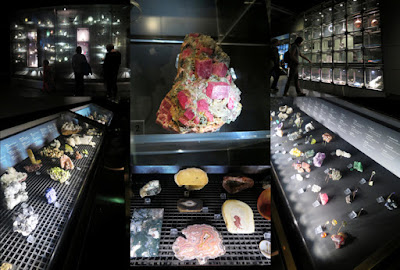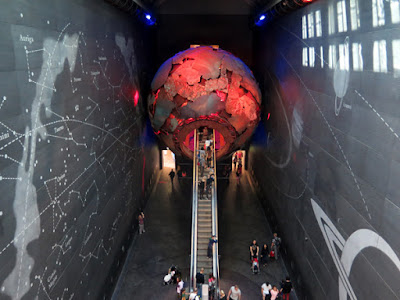 |
| Cuddly dinosaurs at the Natural History Museum Shop |
As I
have discovered when teaching English to groups of Spanish teenaged students,
during summer schools in Sheffield, shopping is high on their agenda and, on field trips to places like York, Lincoln, Oxford and Cambridge, they would
all come back with reminders of their visit to take back home with
them - or to give as a present.
 |
| A greatly appreciated gift from the City of York |
 I
usually returned with maps or some kind of guidebook from a place that I had visited
during my own free time, which would help me to plan future field trips that I
might wish to undertake with groups of Geotourists.
I
usually returned with maps or some kind of guidebook from a place that I had visited
during my own free time, which would help me to plan future field trips that I
might wish to undertake with groups of Geotourists.
During
my last visit to the Natural History Museum, I was so impressed by the fossil marine reptiles that I had seen and, knowing very little about Mary Anning and
her contributions to palaeontology, I was particularly pleased to discover the
book, Jurassic Mary, in one of the shops that can be found in the
museum.
 |
| A simplified geological map of the North York Moors |
Having
just finished the Lie of the Land, which throws light on places that I only know from lectures as an
undergraduate geologist – such as Lewis, Scourie and Laxford
– I wanted to learn a bit more about fossils.
The coastline of the North York Moors National Park is just over a 2 hour drive from Rotherham and I now feel better prepared for the next time I go there.
Although the purchase
of a book was enough for me, seeing the vast range of products for sale at the Natural History Museum reminded me that it is time to start thinking again
about my own ideas – based on my Glowing Edges Designs and GED Rock Art.
 |
| The Cranbourne Boutique in the Red Zone |
















